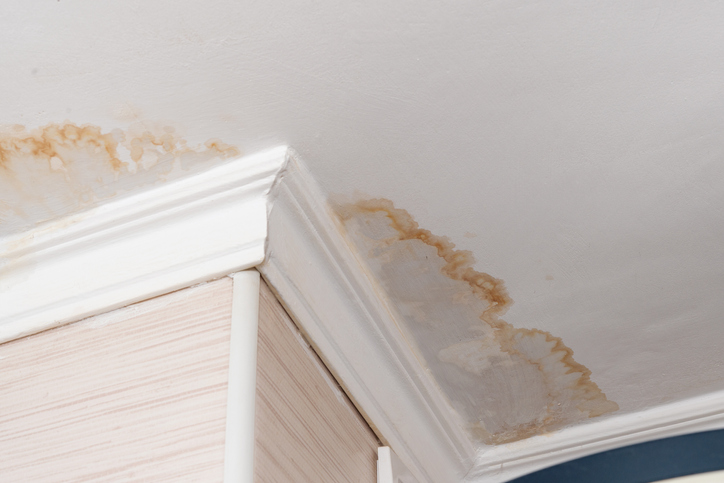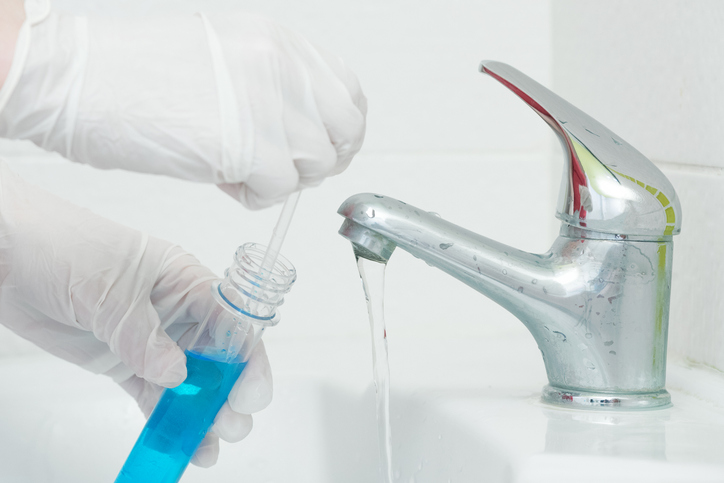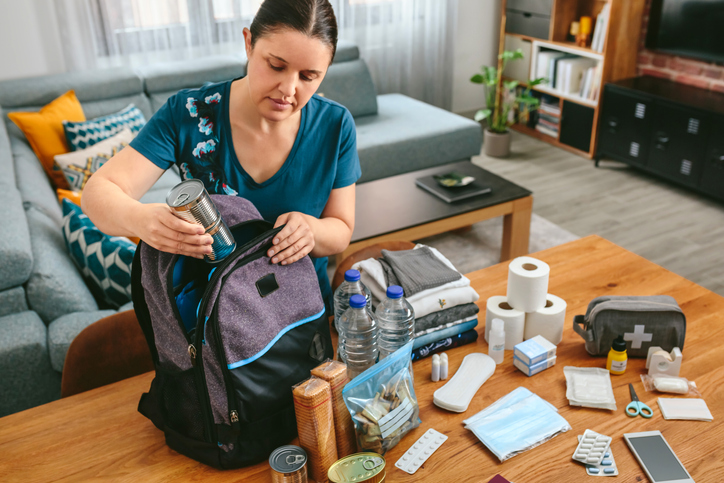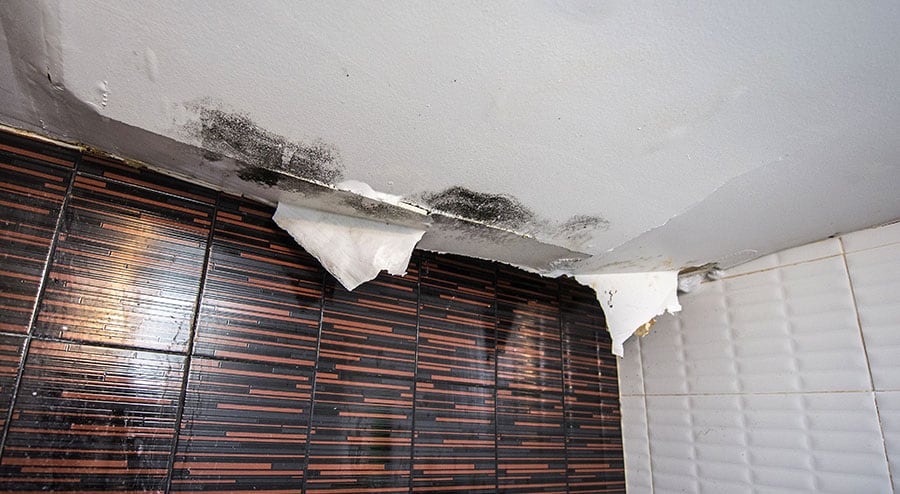In the realm of homeownership, the importance of safeguarding against water damage cannot be overstated. From silent leaks to sudden floods, water has the potential to wreak havoc on a home’s structure, belongings, and overall well-being. Home water damage prevention is not just a proactive measure; it’s a fundamental responsibility that ensures the longevity and resilience of your living space.

Understanding Water Damage Risks
Water damage is a common and potentially costly issue that homeowners may face. It can arise from various sources and causes, each with its own set of challenges. By gaining a comprehensive understanding of these risks, homeowners can take proactive measures to prevent and mitigate water damage. In this section, we will delve into the sources and causes of water damage, including plumbing issues, weather-related factors, and structural vulnerabilities.
- Understanding Water Damage Risks
- Exterior Measures For Prevention
- Interior Strategies For Leak Prevention
- Basement Water Damage Prevention
- Seasonal Preparations And Maintenance
- Detecting And Responding To Water Damage
- Creating A Water Damage Prevention Plan
- Step-By-Step Guide For Personalized Prevention Plan
- Conclusion
Sources And Causes Of Water Damage
Plumbing problems are a leading cause of water damage in homes. Leaky pipes, faulty faucets, and broken fixtures can result in gradual water accumulation within walls, ceilings, and floors. Over time, this can lead to the growth of mold, deterioration of structural components, and even compromise the foundation of the house. To mitigate this risk, regular inspection of plumbing systems, prompt repair of leaks, and adequate maintenance are crucial.
Adverse weather conditions can contribute significantly to water damage. Heavy rainfall, storms, and flooding can overwhelm drainage systems, causing water to seep into basements, crawl spaces, and other vulnerable areas of the home. Additionally, ice dams forming on roofs during winter can lead to water intrusion and subsequent damage. Homeowners should be aware of their local climate patterns and take preventative measures, such as proper landscaping to divert water away from the foundation and ensure proper roof maintenance.
The design and construction of a home can also influence its susceptibility to water damage. Poorly sealed windows and doors can allow water to infiltrate, while inadequate ventilation may lead to condensation buildup, contributing to mold growth and deterioration of materials. Cracks in the foundation or walls can provide pathways for water to enter the home. Using water-resistant building materials, ensuring proper insulation and ventilation, and regular maintenance can help address these vulnerabilities.
Exterior Measures For Prevention
The exterior of a home serves as the first line of defense against water damage. Proper maintenance and thoughtful design of outdoor elements can play a crucial role in preventing water intrusion and flooding. In this section, we will explore two key aspects of exterior water damage prevention: gutter and downspout maintenance, and the importance of grading, landscaping, and drainage systems.
Gutter And Downspout Maintenance
Gutters and downspouts are essential components of a home’s drainage system. They play a vital role in channeling rainwater away from the roof and foundation, preventing water from pooling around the property. Regular maintenance of gutters and downspouts is essential to ensure their optimal functioning.
Gutters can become clogged with leaves, debris, and dirt over time. When obstructed, water overflows from the gutters, potentially causing damage to the roof, siding, and foundation. Routine gutter cleaning, ideally in the spring and fall, helps to prevent such issues.
Downspouts should extend several feet away from the foundation to ensure that water is directed away from the house. Splash blocks or downspout extensions can be installed to facilitate proper drainage. Regularly inspecting and maintaining downspouts can prevent water from pooling near the foundation and causing structural damage.
Grading, Landscaping, And Drainage Systems
Proper grading involves shaping the landscape around the home to encourage water to flow away from the foundation. The ground should slope downward from the house, preventing water from accumulating near the walls and seeping into the basement. Correcting the grading may involve adding soil or adjusting existing landscaping.
Thoughtful landscaping can aid in water damage prevention. Strategic placement of plants, shrubs, and trees can help absorb excess water and reduce soil erosion. Additionally, using mulch and ground covers can minimize soil splashing and improve water absorption.
Installing effective drainage systems, such as French drains, can help redirect water away from vulnerable areas. These systems involve the use of perforated pipes and gravel to create a path for water to follow, effectively channeling it away from the foundation. Sump pumps with battery backups can also be valuable components of a drainage system, especially in areas prone to heavy rainfall.
According to the Insurance Information Institute, water damage is one of the most common and costly causes of homeowners insurance claims, accounting for about 24% of all property insurance claims in the United States. Proper water damage prevention measures can significantly reduce the risk of such claims and their associated expenses.
Interior Strategies For Leak Prevention
The interior of a home is equally susceptible to water damage as the exterior. Implementing effective strategies within the living space can help minimize the risk of leaks and flooding. In this section, we will delve into two vital interior measures for water damage prevention: regular inspection of water supply lines and plumbing, and the use of water-resistant building materials and ventilation.
Regular Inspection Of Water Supply Lines And Plumbing
Water supply lines and plumbing systems are the lifelines of a home. Regular inspection is essential to detect and address any leaks, drips, or signs of corrosion promptly. Even small leaks can cause significant damage over time, leading to mold growth, weakened structural components, and increased utility bills.
Homeowners should perform visual inspections of exposed pipes, such as those under sinks and behind appliances, on a regular basis. Additionally, it’s recommended to schedule professional plumbing inspections annually or as per the manufacturer’s recommendations.
Appliances that utilize water, such as washing machines, dishwashers, and water heaters, should be checked for leaks or malfunctioning connections. Inspecting hoses, valves, and connections for wear and tear can prevent sudden water damage.
Using Water-Resistant Building Materials And Ventilation
Utilizing water-resistant building materials in vulnerable areas, such as bathrooms and kitchens, can offer an extra layer of protection. Water-resistant drywall, moisture-resistant paint, and waterproof membranes can help prevent water penetration and subsequent damage.
Adequate ventilation is crucial for preventing moisture buildup and mold growth. Bathrooms, kitchens, and basements are particularly susceptible to high humidity levels. Installing exhaust fans, ensuring proper attic ventilation, and using dehumidifiers can help maintain optimal humidity levels and prevent condensation.
Properly sealing windows, doors, and gaps in the building envelope can prevent water intrusion during heavy rainfall. Regularly inspect and replace deteriorating caulking to maintain a watertight seal.
Basement Water Damage Prevention
Basements are susceptible to water damage due to their lower position in the home and their direct contact with the ground. To safeguard against potential flooding and moisture-related issues, homeowners can employ various preventative measures. In this section, we will explore two crucial strategies for basement water damage prevention: basement waterproofing and sump pump usage, and the protection of crawl spaces and attics.
Basement Waterproofing and Sump Pump Usage
Basement waterproofing is a comprehensive approach to preventing water infiltration into the basement area. It involves a combination of techniques and materials to create a barrier against moisture. These may include exterior waterproofing coatings, interior sealants, and the installation of drainage systems.
Sump pumps play a vital role in basement water damage prevention. They are designed to remove accumulated water from the basement by pumping it out and away from the foundation. Installing a sump pump with a battery backup system ensures its operation even during power outages, providing an extra layer of protection.
Proper maintenance of sump pumps is crucial to ensure their effective functioning. Regularly inspect the pump, clean the inlet screen, and test the system to make sure it activates when needed.
Protection Of Crawl Spaces And Attics
Crawl spaces are often overlooked but can be a source of moisture and potential water damage. Encapsulating crawl spaces with vapor barriers can help prevent moisture from entering and minimize the risk of mold growth. Proper ventilation and insulation are also essential to maintain a dry environment.
Attics can be susceptible to leaks from roof damage or inadequate ventilation. Proper attic ventilation helps regulate temperature and humidity, reducing the potential for condensation and mold growth. Regularly inspect the attic for leaks, and damaged roof shingles, and ensure proper insulation.
Adequate insulation and ventilation are key to protecting both crawl spaces and attics. Properly insulating these areas can prevent heat and moisture transfer, reducing the risk of water damage. Well-designed ventilation systems help maintain balanced humidity levels, further minimizing the potential for moisture-related issues.
Seasonal Preparations And Maintenance
Seasonal changes bring with them specific challenges that can contribute to water damage within a home. To mitigate these risks, homeowners should adopt seasonal preparations and maintenance routines. In this section, we will delve into two crucial aspects of seasonal water damage prevention: winterizing to prevent frozen pipe bursts, and safeguarding against renovation-related water damage.
Winterizing To Prevent Frozen Pipe Bursts
During the colder months, one of the most common risks is frozen pipes. Proper insulation in areas where pipes are exposed to cold temperatures, such as attics, crawl spaces, and basements, can help prevent freezing. Additionally, maintaining adequate indoor heating helps keep pipes at a safe temperature.
Allowing faucets to drip slightly during freezing temperatures can help relieve pressure within pipes and prevent them from bursting. This is particularly important for pipes located in exterior walls or unheated spaces.
Before the arrival of freezing weather, outdoor hoses should be disconnected and drained. Any residual water in the hose can freeze and potentially cause damage to both the hose and the connected faucet.
Safeguarding Against Renovation-Related Water Damage
Home renovations and remodeling projects can inadvertently lead to water damage if proper precautions are not taken. Before starting any project that involves plumbing, it’s important to have a comprehensive plan in place. Consider hiring a professional to assess potential risks and ensure that plumbing systems are properly disconnected and protected.
During the renovation process, closely monitor areas where plumbing work is being done. Any signs of leaks or water intrusion should be addressed immediately to prevent further damage.
Upon completion of the renovation, conduct a thorough inspection of the work area. Check for any signs of water damage, including dampness, discoloration, or mold growth. Address any issues promptly to prevent long-term damage.
If hiring contractors for renovation projects, ensure that they are aware of the potential risks of water damage and the importance of taking preventative measures. Clear communication can help prevent accidents and minimize the risk of water-related issues.
Detecting And Responding To Water Damage
Water damage can sometimes go unnoticed until it has already caused significant harm. Detecting water leaks and responding promptly is essential for minimizing damage and preventing further issues. In this section, we will explore three key aspects of detecting and responding to water damage: the benefits of leak detection systems, identifying hidden water leaks, and educating family members on prevention and response.
Benefits Of Leak Detection Systems
Leak detection systems are advanced technological solutions designed to provide homeowners with early warnings and real-time alerts about potential water leaks in their homes. These systems offer a range of benefits that contribute to comprehensive water damage prevention and swift response.
Leak detection systems are equipped with sensors that monitor moisture levels in key areas prone to water damage, such as basements, crawl spaces, bathrooms, kitchens, and laundry rooms. By continuously monitoring these areas, the system can detect even the slightest increase in moisture, indicating a possible leak. This early detection allows homeowners to address leaks promptly before they escalate into significant issues.
One of the primary advantages of leak detection systems is their ability to minimize property damage. By identifying leaks at their inception, homeowners can take immediate action to contain and resolve the issue before it causes extensive damage to walls, flooring, furniture, and other valuable possessions. This proactive approach can save homeowners significant amounts of money in repair and restoration costs.
Moisture from leaks provides an ideal environment for mold and mildew growth. By detecting and addressing leaks early, leak detection systems help prevent the development of mold colonies, which can contribute to respiratory issues and other health problems. This is particularly important for individuals with allergies, asthma, or other respiratory conditions.
Modern leak detection systems are often integrated with smartphone apps or home automation platforms. When a leak is detected, the system sends real-time alerts and notifications to homeowners’ devices, allowing them to respond swiftly, even if they are away from home. This remote monitoring capability adds an extra layer of convenience and peace of mind.
Undetected leaks can lead to significant water wastage over time. By promptly identifying and addressing leaks, leak detection systems contribute to water conservation efforts and help homeowners reduce their water bills.
Some insurance companies offer incentives or discounts to homeowners who have installed leak detection systems. These systems demonstrate the homeowner’s commitment to preventing water damage, potentially leading to reduced insurance premiums.
Water damage can compromise the structural integrity of a home over time. Leak detection systems play a crucial role in preserving the long-term health of the building by preventing issues like wood rot, deterioration of materials, and weakened foundations.
Identifying Hidden Water Leaks
Hidden water leaks can be particularly insidious, causing damage over time before becoming apparent. Detecting these leaks early is essential to prevent structural damage, mold growth, and costly repairs. Here’s an in-depth look at various methods to identify hidden water leaks:
Comparing your water bills over several months can help identify unusual spikes in water usage. If your consumption has significantly increased without an obvious explanation (such as additional household members or seasonal changes), it could be a sign of an undetected leak.
Perform regular visual inspections of your home’s interior, focusing on areas where leaks are more likely to occur. Check for water stains, discoloration, or warping on walls, ceilings, and floors. Peeling paint or wallpaper could also indicate moisture-related issues.
Turn off all faucets and water-using appliances, then check your water meter. If the meter continues to run or if you notice fluctuations, it suggests an active water leak somewhere in your plumbing system.
Leak detection kits are available in hardware stores and online. These kits often include tools like moisture detectors, infrared thermometers, and dye tablets that can help pinpoint the source of a leak.
Running water sounds when no faucets are on or the sound of dripping water behind walls could indicate hidden leaks. Pay attention to any unusual noises that could be associated with water movement.
Regularly check appliances that use water, such as toilets, sinks, dishwashers, and washing machines. Look for signs of leaks, drips, or pooling water around the base or connections. Musty or moldy odors in certain areas of your home could be a sign of hidden water leaks. Mold thrives in damp environments, so a persistent musty smell could indicate the presence of mold growth due to moisture.
If you suspect a hidden water leak but are unable to identify the source, consider hiring a professional leak detection service. These professionals use specialized equipment, such as infrared cameras and acoustic sensors, to pinpoint the exact location of leaks without causing unnecessary damage to your property.
High humidity levels can lead to condensation and moisture buildup, contributing to hidden leaks. Use a hygrometer to monitor humidity levels in different areas of your home.
Creating A Water Damage Prevention Plan
Recap the diverse sources and causes of water damage. Highlight the importance of recognizing plumbing issues, being prepared for weather-related factors, and addressing structural vulnerabilities. Emphasize that a comprehensive prevention plan should address all potential risks.
Summarize the significance of maintaining gutters and downspouts to ensure proper water drainage. Mention the role of grading, landscaping, and drainage systems in preventing water accumulation around the home’s foundation, ultimately preventing leaks and flooding.
Reiterate the need for regular inspections of water supply lines and plumbing systems to detect leaks early. Stress the importance of using water-resistant building materials and ensuring proper ventilation to reduce the risk of moisture-related issues.
Highlight the critical role of basement waterproofing in preventing water infiltration and discuss the importance of using sump pumps with battery backups to remove excess water. Summarize the need to protect crawl spaces and attics from moisture.
Emphasize the importance of winterizing to prevent frozen pipe bursts during cold months. Highlight the need to safeguard against renovation-related water damage by planning and monitoring home improvement projects closely.
Recap the benefits of utilizing leak detection systems for early leak detection and prevention. Stress the importance of identifying hidden water leaks by monitoring water bills, conducting visual inspections, and listening for unusual sounds. Summarize the significance of educating family members about prevention and response strategies.
Step-By-Step Guide For Personalized Prevention Plan
Creating a personalized water damage prevention plan involves a systematic approach tailored to your home’s unique characteristics and needs. By following a step-by-step guide, homeowners can develop a comprehensive strategy to minimize water damage risks and respond effectively to potential issues.
- Assessment of Vulnerabilities – Begin by evaluating your home’s vulnerabilities. Consider factors such as geographical location, climate, age of the house, and its structural features. This assessment helps you identify areas prone to water damage, such as basements, crawl spaces, and areas with poor drainage.
- Exterior Maintenance Checklist – Develop a checklist for regular exterior maintenance tasks. Include gutter and downspout cleaning, especially before the rainy season, to ensure proper water flow. Plan for routine grading and landscaping adjustments to direct water away from the foundation. Regularly inspect drainage systems and ensure they are free from blockages.
- Interior Inspection Routine – Create a schedule for inspecting the interior of your home. Focus on water supply lines, plumbing fixtures, and appliances. Check for signs of leaks, such as water stains, dampness, or mold growth. Regular inspections help detect and address issues early.
- Basement and Crawl Space Measures – Outline specific steps for basement water damage prevention. Include basement waterproofing methods like sealing cracks and applying moisture-resistant coatings. Describe the installation of a sump pump with a battery backup system to remove excess water. Address crawl space encapsulation and attic ventilation to maintain a dry environment.
- Seasonal Preparation – Detail actions to take before each season. For winter, emphasize the importance of insulating exposed pipes to prevent freezing and bursting. Provide guidance on disconnecting outdoor hoses and draining irrigation systems. Before renovation projects, create a checklist to protect water supply lines and ensure proper drainage during construction.
- Response Plan – Develop a clear response plan for addressing water damage emergencies. Include steps such as shutting off the main water supply, contacting emergency professionals, and documenting damage for insurance claims. Provide instructions for safely handling electrical systems and appliances in water-affected areas.
- Educating Family Members – Highlight the significance of educating all family members about the prevention plan. Teach them how to identify signs of leaks, locate shut-off valves, and operate basic plumbing fixtures. Emphasize the importance of prompt communication and action in case of emergencies.
- Regular Review and Updates – Stress the need for ongoing review and updates to the prevention plan. Encourage homeowners to revisit the plan periodically, especially after home renovations or changes in the household. Emphasize the importance of staying informed about new technologies or methods for water damage prevention.
Conclusion
In the quest to maintain a safe and secure living environment, home water damage prevention emerges as a cornerstone of responsible homeownership. By understanding the diverse sources and causes of water damage, implementing exterior and interior measures, and adopting vigilant detection and response strategies, homeowners can effectively safeguard their properties against the potential risks of leaks and flooding. A well-rounded prevention plan, personalized to the unique characteristics of each home, not only preserves the structural integrity of the property but also offers peace of mind, ensuring that families can thrive in a dry, comfortable, and resilient living space for years to come.




